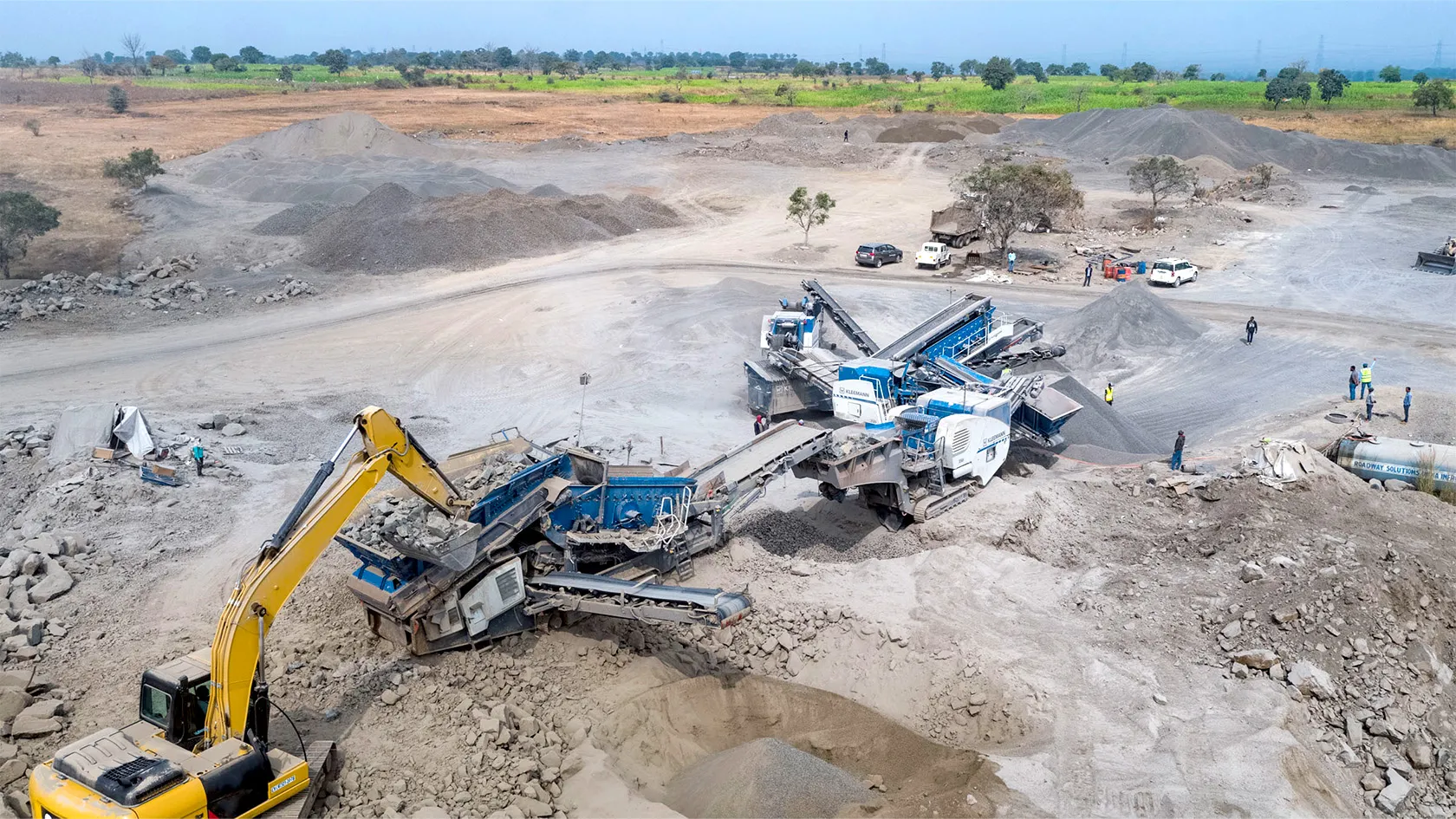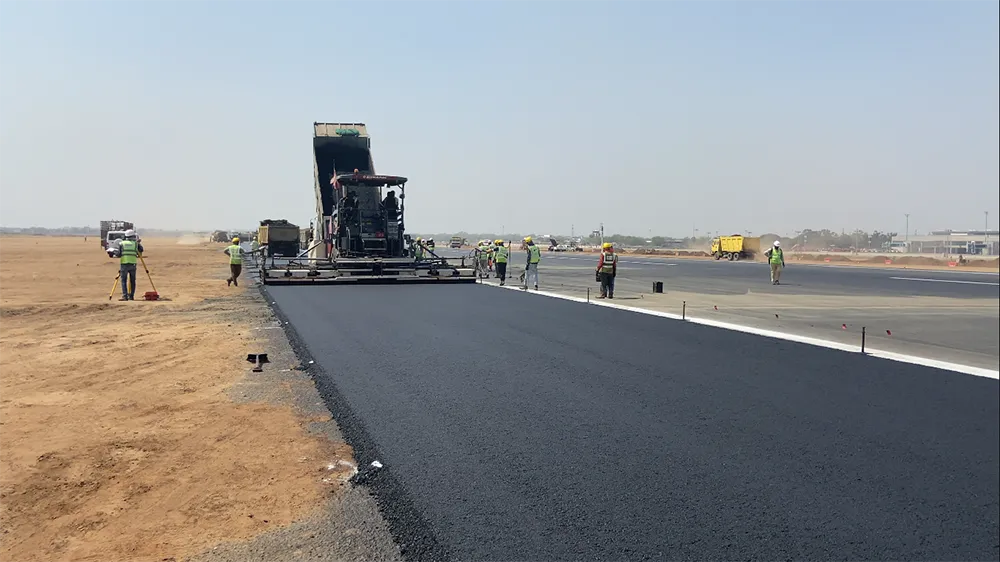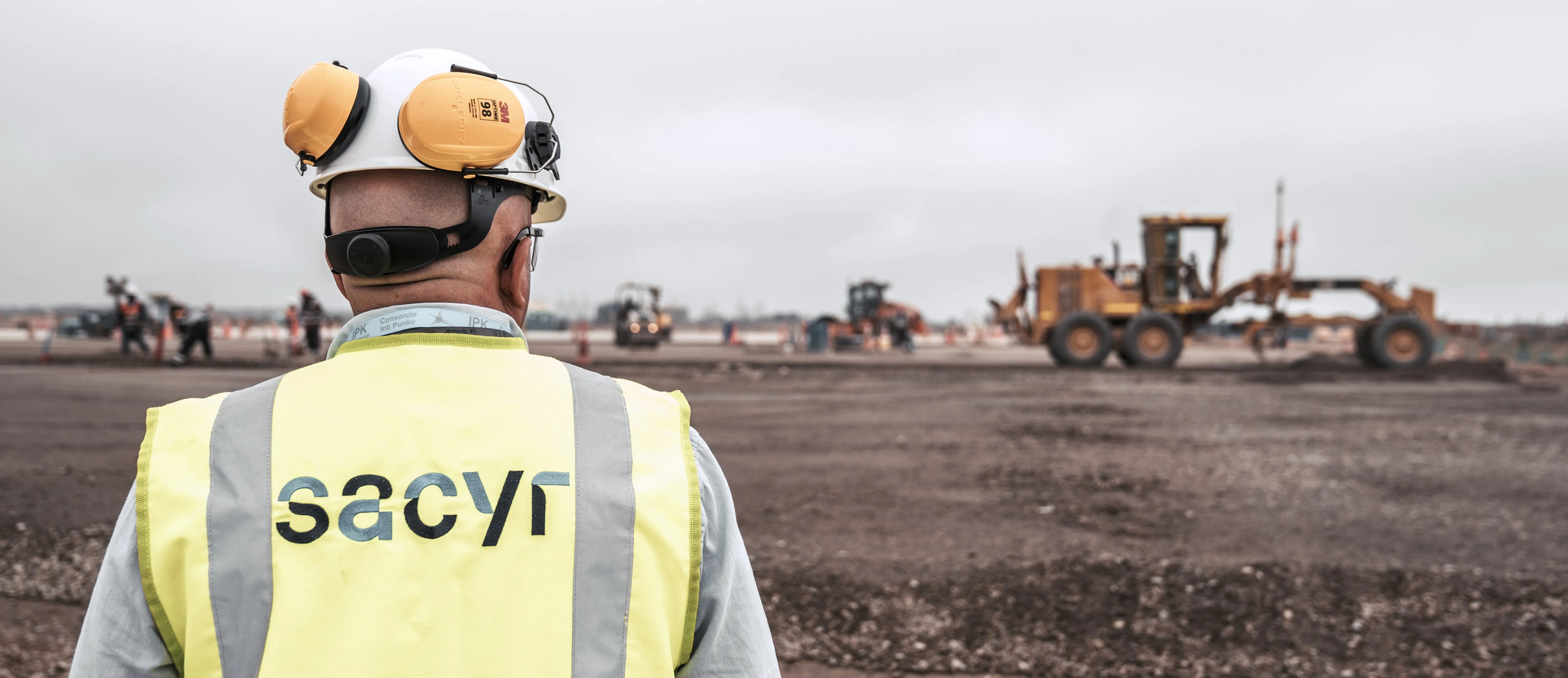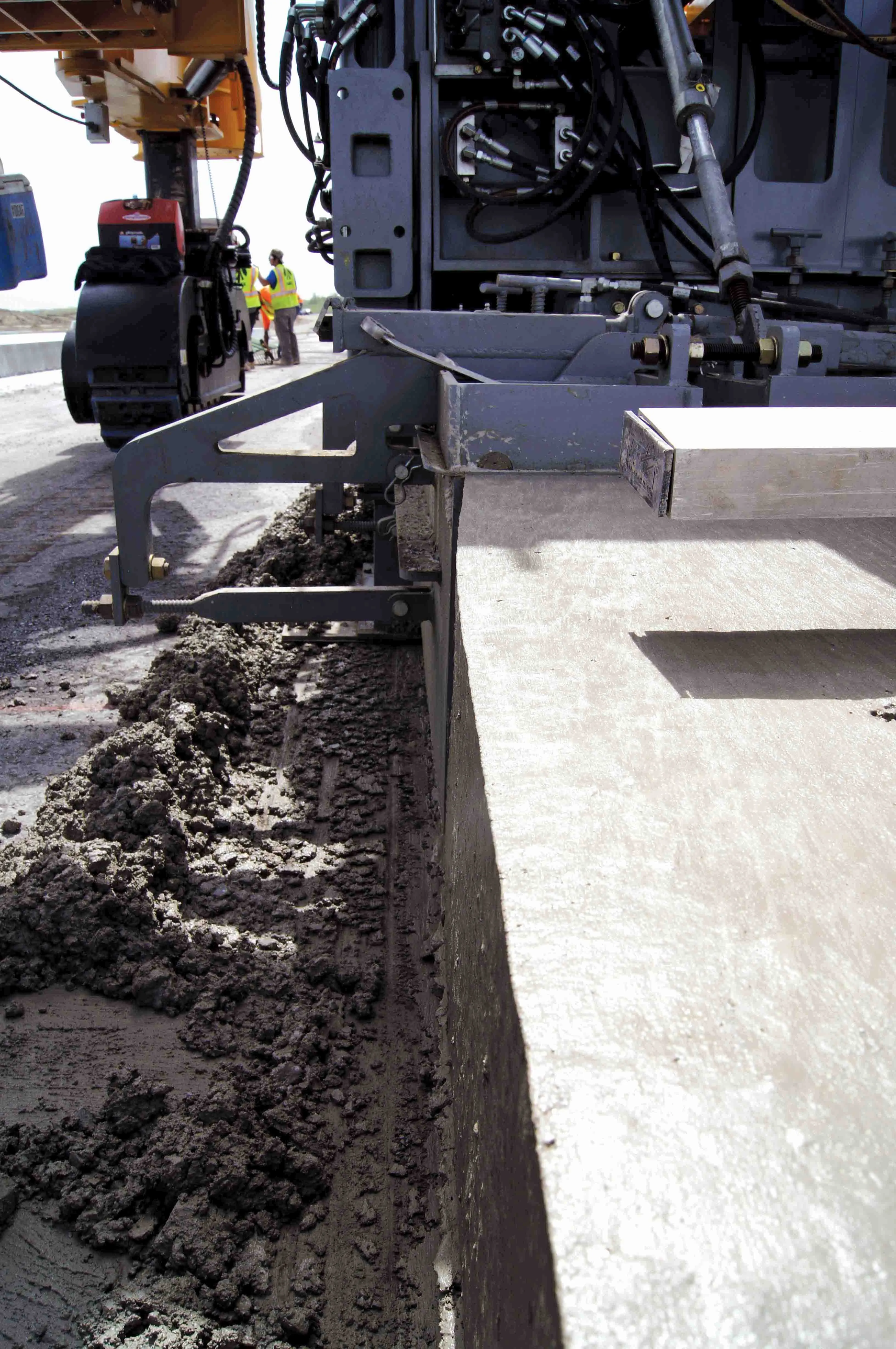A slipformer from Power Pavers has been carrying out paving work at an airport in the US.
By MJ Woof
October 1, 2024
Read time: 1 min
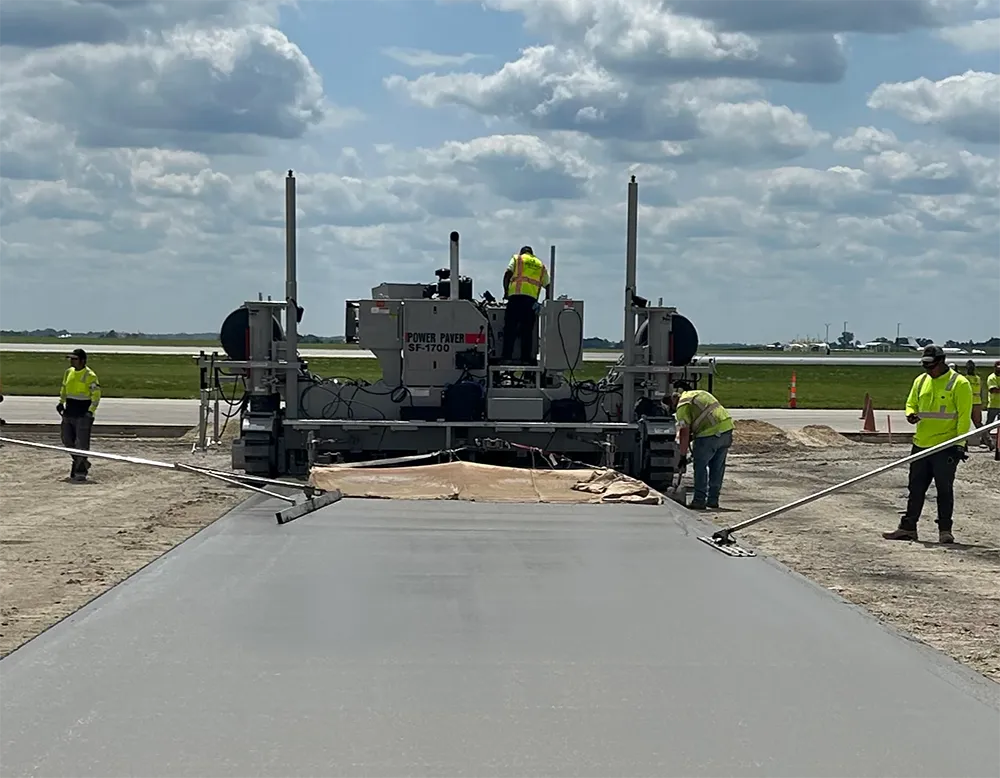
An SF-1700 concrete paver from Power Pavers has been used to lay the slab for a new taxiway at an airport in the US state of Iowa. The machine was employed by contractor Metro Paving to lay down slabs with thicknesses ranging from 165-355mm. The widths of the slabs ranged from 3.8-6.7m. The firm has laid several stretches of slab with the longest so far measuring 305m.
The new taxiway is part of a series of upgrades at the airport, intended to improve and update the facilities. The slipformer from Power Pavers is said to have worked reliably on the project, one of several pieces of equipment employed by Metro Pavers for the project.


